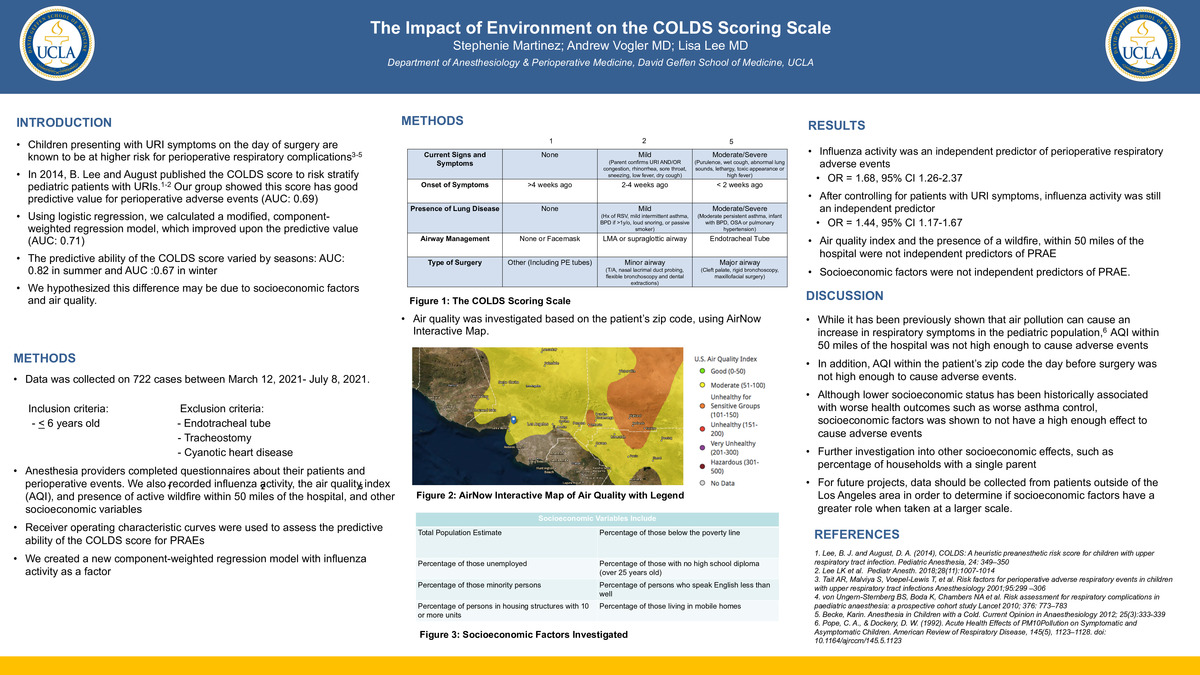-
Author
Stephenie Martinez -
PI
Dr. Lisa Lee
-
Co-Author
Dr. Andrew Vogler
-
Title
The Impact of Environment on the COLDS Scoring Scale
-
Program
STTP
-
Other Program (if not listed above)
-
Abstract
Pediatric patients who undergo anesthesia and surgery can be at risk for perioperative respiratory adverse events (PRAEs), which include laryngospasm, bronchospasm, oxygen desaturation, prolonged coughing and need for supplemental oxygen in the post-operative period. These PRAEs can lead to respiratory arrest and cardiac arrest if not promptly addressed. Risk factors for PRAEs include recent upper respiratory infection, history of lung disease, second-hand smoke exposure, instrumentation of the airway with laryngeal mask airway or endotracheal tube, and whether the surgery involves the airway. The COLDS score1 integrates these risk factors into a single score risk tool that provides a predicted probability of PRAE for a given patient, but the predictive ability of this score is modest and suggests that other unaccounted factors may contribute to PRAEs. Lower socioeconomic status has been historically associated with worse health outcomes2 such as worse asthma control3, which in turn may influence rates of PRAE in the pediatric population. Our group focused on how socioeconomic factors such as affluence, neighborhood density and air quality affect the risk of perioperative respiratory adverse events, which has not been well-studied. Influenza activity was an independent predictor of perioperative respiratory adverse events. After controlling for patients with URI symptoms, influenza activity was still an independent predictor. Air quality index and the presence of a wildfire, within 50 miles of the hospital were not independent predictors of PRAE. Socioeconomic factors, such as total population estimate, percentage of those below the poverty line, percentage of those unemployed, percentage of those with no high school diploma, percentage of those minority persons, percentage of persons who speak English less than well, and percentage of persons in housing structures with 10 or more units were not independent predictors of PRAE.
-
PDF
-
Zoom
https://uclahs.zoom.us/j/95529645156?pwd=SnJvSHlHY2tNQVZ3eDZLTVVqeWxlZz09

